One of the most popular pets in the world, besides, dogs are cats. According to cat statistics, cats are very loyal and affectionate animals.
Millions of cats are adopted but there are still many of them in animal shelters or on the street. Do you know how many cats enter animal shelters in the United States every year? The number might surprise you.
Cats tend to attack more than dogs, but fortunately, there are not many fatal cases. Still, a high percentage of attacks cause infections that can have bad consequences, especially in children. Do you know how many cases of infection are reported in the last years?
In our article you can find all the needed facts about cats, we prepared the ultimate list of 72 facts so make sure you keep on reading.
Statistics that are covered include:
- General cat statistics & facts
- Cat ownership statistics
- Cat health statistics
- Cat declawing statistics
- Lost cat statistics
- Cat behaviour facts
- Cat shelter statistics
- Cat euthanasia statistics
- Homeless cat statistics
- Cat breed facts
- Cat killing birds statistics
- Black cat adoption statistics
- Cat attack statistics
- Cat obesity statistics
TOP CAT STATISTICS & FACTS
(EDITOR’S PICK)
- There are over 400 million cats in the world.
- Around 373 million cats are kept as a pet.
- Around 2.4 million cats are therapy pets.
- About 42.7 million households in the United States have a cat.
- About 43% of owners got cats from rescue or animal shelters.
- Cat expenses reached $99 billion in 2020.
- The average cat owner spends $286 every year.
- According to stats, 1 in 10 cats will get heart disease.
- Cats spend around 5 hours a day grooming and cleaning themselves.
- About 3.2 million cats enter shelters every year.
- There are around 860,000 euthanized cats every year in the U.S.
- The biggest pedigree cat weights up to 25lbs.
- Cats kill up to 3.7 billion birds every year.
- There are around 400,000 cat bites every year.
- Almost 60% of cats are obese or overweight in the U.S.
GENERAL CAT STATISTICS
1. There are over 400 million cats in the world
According to statistics from countries all over the world, there are more than 400 million cats. It is difficult to determine the exact number because of a lot of stray and feral cats.
Source: petpedia.co
2. First domesticated cats came to America in 1600.
Cats weren’t domesticated in the United States until settlers came across the ocean from Europe in 1600. When they brought cats with them on the ship, cats were “employed” to catch mice and different rodents on the ship.
In the 19th century, the idea that cats can be pets was made and keeping felines as pets finally took off.
Source: petpedia.co
3. Around 373 million cats are kept as a pet
From the 400 million cats in the world, statistics show that at least 375 million cats in every country are kept as pets. This shows that people love cats and they’re on the top list of most picked animals as pets.
Source: petpedia.co
4. Germany is the country with most cats in the EU
EU countries love cats and in the past decade, they become one of Europe’s favorite pets. There was a survey with the top 10 countries that have the most cats in the EU.
According to statistics, Germany is on the top list with 14.5 million cats, which represent 23% of all German households. In second place in France that has 13.5 million cats. In third place is the UK with 7.5 million.
Source: petpedia.co
5. One year of cat life equals 15 years of human
Cats are specific creatures that age much faster than humans, which means they will live much shorter than the average human. 1 year of cat life is equal to 15 in human life.
Source: funkidslive.com
6. A cat can have up to 12 kittens in a litter
The average cat, according to statistics has four kittens in a litter ut this number can go from 1 to even 12. Cats can give birth up to five times a year, and a single female can produce up to 420 cats in a few years.
This is the number one reason why cats need to be neutered or spayed because there is a real danger of the number of stray cats in the United States.


Source: petpedia.co
7. Feral cats live shorter than house cats
Statistics show that cats that are living on the street, no matter if they stray or feral, have a much shorter life due to bad conditions which include extreme cold and hot weather, starving, and diseases like AID or FIV.
If a cat lives with humans and enjoys life with all the needed care, it can live for a long time, usually more than 10 years.
Source: petpedia.co
8. TNR method reduces the number of community cats by 66%
TNR stands for Trap Neuter Return and according to all studies, this method is one of the most successful to reduce the outdoor cat population. Using the TNR method the outdoor cat population in the last 11 years was reduced by 66%.
Another study shows that the long-term effect of this method reduces the number of community cats by 55%. This method improved the wellness of homeless and stray cats and also increase their average lifespan.
Source: petpedia.co
9. Feral cats produce around 80% of all kittens every year in the U.S.
Feral cats as the wild cats have minimal contact with humans which presents the problem with spaying and neutering. Because the vast majority of them are not spayed or neutered, they produce 80% of kittens every year in the United States.
Feral cats, unfortunately, can’t be adopted, nor their kittens, and that is the reason why the euthanasia rate is high in areas with a large population of these types of animals.
Source: petkeen.com
10. About 51% of cats in the U.S. are female
Statistics about the gender of cats in the United States show that there are almost half female and male cats, about 51% of felines are female. When it comes to genetics, 100% of domestic cats are born with blue eyes that are usually changing depending on the breed and genetics.
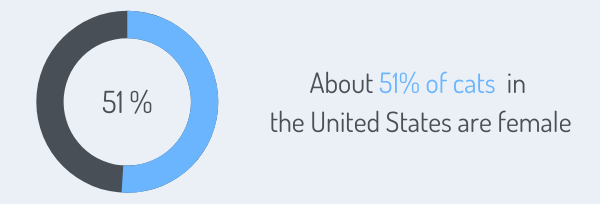

Source: allaboutcats.com
11. Around 2.4 million cats play roles are therapy pets
Therapy and emotional support for those whore healing from depression, loneliness, or anxiety often include pets. When someone thinks about therapy pets, it usually includes dogs, but more and more therapy cats play role in emotional sports therapies.
According to research around 2.4 million cats “work” as therapy pets all over the world.
Source: allaboutcats.com
CAT OWNERSHIP STATISTICS
12. About 42.7 million households in the United States has a cat
The United States is one of the top countries with the most pets in the world, and according to all statistics number of cats in this country is incredibly high.
About 42.7 million households in the country have at least one cat. Most of the cats in US households are mixed breeds. Statistics show that 87% of these cats are neutered or spayed.
Source: petpedia.co
13. The average number of cats per household is 2
Statistics show that more households in the United States have dogs than cats, comparing the percentage 53% vs. 35.7%. When it comes to an average number of cats per household, households usually have 2 or more cats, while families with dogs usually have one pet. According to surveys, about 25.4% of households in the United States own at least one cat.
Source: petpedia.co
14. Millennials are leading pet owners with 31%
According to ownership statistics by generation, Millenials have the most pet households, with 31%. Around 82% of them have a dog and 50% have at least one cat at home. Behind the Millenials are Baby Boomers with 29%, as well as Gen Xers generation with 26% in third place.
Many pet owners consider their cats as part of their families and their best friends. But more than half of Millenials see their beloved cats as their children.
Source: petpedia.co
15. Average Millenial family spend $745 every year on their cat
The age group that spends the most money on their cat is Millennials, which is not a surprise according to the percentage of households that have pets.
About $745 will be spent every year on cats, while Gen Xers spend about $669. In the middle are Baby Boomers with $681 annual expenses for a pet cat.
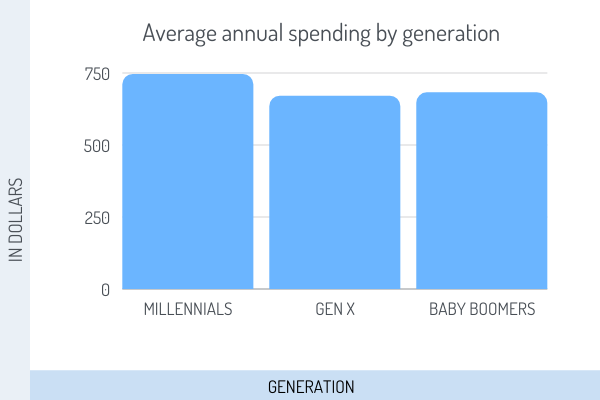

Source: petpedia.co
16. About 43% of owners got cats from rescue or animal shelter
According to APPA’s and reports from 2019 and 2020., shows that 43% of rescued cats are from animal shelters, 12% of them bought cats in-store, 12% got a cat from family or friends and only 3% purchased cats from a local breeder.
Source: petpedia.co
17. According to stats, 46% of cat owners learner about pets through word of mouth
There are many ways to hear about the possibility of adopting specific pets, and according to stats, about 46% of cat owners said that they learned about their pets through word of mouth.
Other statistics revealed that 31% of cats are adopted from shelters and 27% of them were stray cats.
Source: aspca.org
18. Vermont has 44.6% of households with a cat
Pet ownership statistics by stare reveal that Vermont is the top state with the highest percentage of families that own a cat. There are 44.6% homes with cats, which present almost half of all households.
Source: petpedia.co
19. Only 16.4% of household in the District of Columbia has a cat
The state with the lowest rate of cat ownership is the District Of Columbia, where only 16.4% of families own a cat.
This is the state with the lowest rate of households that own a dog as well, only 22.5% of families have pets. We can assume that people in this state don’t prefer having a pet in their homes.
Source: petpedia.co
20. Cat expenses reached $99 billion in 2020
According to cat stats from 2020, pet expenses reaches $99 billion. Expenses included cat food, supplies, medication as well as pet care services like grooming, boarding, and veterinary care.
Source: petpedia.co
21. The average cat owner spends $286 every year
Pet food cost the highest, and it depends on which breed of cat someone has and their dietary needs. According to a survey from 2020, the average cat owner spends $286 a year. This includes around $228 for food and $58 for treats.
Veterinary visits, as well as other additional costs, can higher annual expenses. The least amount was spent on toys for playing, cat owners spend approximately $31 a year for scratches, feathers, mice toys. Comparing it to the cost of dog ownership, having a cat will cost you less than having a dog.
Source: petpedia.co
22. Around 21% of Americans spent more on their pets during the Covid-19 pandemic
Pet industry stats revealed that pet owners including those who have cats or a dog, spend more during the global pandemic because of the Covid-19 virus. The average cat owner spent about $687.
The main is the reason is that owners spend more time at home because of quarantine, so it was a perfect time to spoil their pet even more.
Source: petpedia.co
23. About 52% of cat owners got their pet for a company
It is scientifically proved that animals, especially pets as dogs and cats have a positive impact on human mental health. Cat stats show that more than half of cat owners said that they got pets to keep them company, especially if they’re living alone.
Source: petpedia.co
24. More than 60% of cat owners give their pet Christmas present
There is a study that shows that about 68% of Americans that own at least one pet give them toys or presents for Christmas. About the same percentage of cat owners usually buy their cat a present for Christmas and they think that pets also needed to be rewarded during the holidays.
Source:gallup.com
25. Cat statistics show that more kittens are adopted than older cats
Newborn animals, especially cats are the cutest in the world and that is the main reason why humans will adopt kittens rather than an old cats. About 82% of kittens will get adopted, and older cats have a lower adoption rate.
According to the survey, when a cat reaches 18 months, the interest to adopt her will get lower. Animal shelter stats revealed that only 60% of old cats will find a new home.
Source: petpedia.co
26. Around 85% of adopted cats during global pandemics are still family members
The increase of pet adoption continues even during the global pandemic because of the Covid-19 virus, and many kittens and old cats find their new families. After two years of the pandemic, according to research, about 85% of cats that are adopted from the street or animal shelters are still with their families.


Source: petkeen.com
CAT HEALTH STATISTICS
27. The average indoor cat lives 15 years
Statistics show that the average indoor cat will live around 15 years. There are many factors that influence how long a cat will live, and they include environment, health, genetic predisposition, and breed. Another important factor includes neutering because sterilization will protect feline from different diseases and prolong their life.
Source: petpedia.co
28. The longest-lived cat has 38 years
Statistics reveal that Creme Puff from Austin was the longest-lived cat till this day. She lived 38 years and 3 days. According to many types of research, mixed-breed tend to live longer than purebred felines, because mixed genes help them fight many different diseases much better.
Source: petpedia.co
29. The average cost for insurance is between $10 and $40
More and more cat owners decide to have cat insurance, especially if they have a very sensitive cat with a lot of disease predisposition. According to data, cat insurance sot between $10 and $40 depending on the cat’s age, state, and breed. The plans that cover illness and accidents cost around $26.90 per month.
Source: petpedia.co
30. Pet insurance for cats doubled compared to last year
As the number of new cat owners is growing, pet insurance increased, as well. Compared to the statistics from the last year, the purchase of cat insurance almost doubled
Source: petkeen.com
31. Around 8% of people with allergies gave up having a cat
According to statistics, three in ten Americans have allergies to the fur of cats and dogs. Cat allergies are much common, and people are twice likely to have allergies to cats than dogs. Because of hard allergies problems, around 8% reported that they gave up having a cat as a pet.
Source: petpedia.co
32. According to stats, 1 in 10 cats will get heart disease
There are many symptoms of cardiovascular conditions but the most common include lethargy and shortness of breath. According to cat health statistics, 1 in 10 cats around the world will be affected by heart disease.
There are unfortunate cases of sudden onset heart disease which ends up fatally. Cat statistics reveal that heart disease is the number one cause of death among felines.


Source: petpedia.co
33. Cat over 11 years is a senior cat
Some cats start to show signs of aging at the year 10, which includes lack of energy which affects their mobility. Usually, when some said it is a senior dog it means she has more than 11 years. Some older cats can still be very active, depending on health conditions and breed.
Source: petpedia.co
DECLAWING STATISTICS
34. The laser method of declawing cost up to $450
One of the favorite daily routines that cats love to do is sharping their claw. If there is no jute or carpet scratcher, they will do it on your carpet and furniture which will damage it.
If you want to stop it, there are laser methods of declawing that cost from $250 to $450 depending on the vet. The process includes cutting bones the claws grow from, and all the procedure testing and overnight stay are included in the price.
Statistics show that about 20 to 25% of domestic cats that are adopted have been declawed and about 55% of cat owners in the United Stated think declawing is a normal and acceptable practice, but many oppose this procedure comparing it to animal abuse.
Source: petpedia.co
35. About 55% of declawed cats have behavior problems
Even if the clawing method normal procedure in veterinary centers, there are many reported cases that cat change their behavior after declawing.
There is one study that examined cat behavior after pets have been declawed and it conclude that many cats started to bite their owners after the procedure. Another study shows that 55% of declawed cats were sent to their veterinarian due to behavioral problems.
Source: petpedia.co
LOST CAT STATISTICS
36. Around 15% of cat owners lost their pet in the last five years
Cats love to hang around in the neighborhood, and they can easily jump out of the window and get lost. According to surveys, about 15% of cat owners reported they lost their pet at least once in five-time yer period.
Publish research showed that from 12-18% of cats will go missing at least once in their lifetime.
Source: lostpetresearch.com
37. Studies show that between 53-75% of lost cats are found
Thousands of cats are missing every day, and many of them end up in shelters. According to studies, between 53-75% of missing pets are found. animal Control in towns usually doesn’t pick up stray cats, they usually end up in rescues or animal shelters.
Most of the missing cats were found in the neighborhood, somewhere near the house. If the cat has microchip or collar information, there is much more hope she will be reunited with their owners.
Source: lostpetresearch.com
38. About 66% of missing pets are adult cats
Surveys in some cities show that the highest percentage, about 66%, of missing cats are adult cats. In the second place, 24% are senior pets and only 10% of kittens will somehow get lost.
Source: lostpetresearch.com
CAT BEHAVIOUR STATISTICS
39. The average gestation period for a cat is around 60 day
The gestation period for a cat depends on different factors, but mostly it is about 63-67 days long. The average litter size is four kittens, and many cats can have even 12 kittens. One of ht biggest litter ever recorded is 19 kittens and 15 of them survived.
Source: petpedia.co
40. The average cat can jump 5-6 times her height
How much a cat can jump depend on the length of hind legs, mobility, age, and body mass. The average cat can jump 5-6 times of their height, and some felines can reach eight times their height.
The longest distance jumping recorded in the Guinness Book of World Records was from Waffle the Warrior cat that jumps 7 feet.
Source: petpedia.co
41. About 89% of cat owner admitted sleeping with cat improve their sleep
It is scientifically proved that cuddling with pets can improve mental health as well as improve sleep. According to different surveys, 89% of cat owners said they are satisfied with their sleep when sleeping with cats.
About 76% of cat owners feel loved when sleeping with pets and more than 60% of them feel comfortable and loved.
Source: petpedia.co
42. Cats spend around 5 hours a day grooming and cleaning themselves.
If the cat is not sleeping, when she’s awake the half of time she will groom and clean herself. Cat loves to be clean and that is why they’re constantly licking their fur which prevents them from coughing furballs. Grooming improves their circulation, eliminates infection, and regulates body heat.


Source: petpedia.co
43. Cats can sleep up to 20 hours a day
Cats are on the top list of animals that sleep a lot, and they spend almost two-thirds of their life sleeping. Sometimes they’re not sleeping but snoozing, and every day they will do it for 15 hours on average.
Kittens and senior cats usually sleep much longer, sometimes even 20 hours a day. The primary reason why why sleep that much is energy conservation.
Source: petpedia.co
CAT SHELTER STATISTICS
44. From 6 to 8 million cats enter global animal shelters every year
Thousand of animal shelter takes a high percentage of cats every year, and according to shelter statistics from 6 to 8 million cats will enter shelters every year.
Comparing it to some of the oldest statistics in 1973, where there were 13 million cats each year in shelters, we can conclude that this number decreased by double, which is the result of a high percentage of spaying, neutering, and adotpion.
Source:kittencoalition.org
45. About 3.2 million cats enter shelters every year in the U.S.
Cats are one of the most numerous species in animal shelters and according to shelter statistics, about 3.2 million cats enter shelters every year across the United States.
Every day, animal shelters take abandoned, stray, and newborn cats that are left on the street or in the front of the shelters. Fortunately, 2.1 million of all cats that enter shelters are eventually adopted.
Source: petpedia.co
46. Half of the shelter animals are cats
In some animal shelters all over the United States almost half of the animals that enter are cats. Around 80% of both dogs and cats are in animal shelters, and most of them are healthy or have some minor health issues or treatable conditions.
Source: petpedia.co
47. About 6% of cat owners left cats in the shelter due to family issues
There are reported cases of left pets in shelters because of different housing issues such as divorce. About 4% of cat owners said that the reason they left their cat is divorce and 11% of them announced they had too many animals in their home.


Source: petpedia.co
48. Only 5% of cat owners find their lost cats in one of the animal shelters
Comparing the dog and cat return rate, dogs have a higher rate to reunite with their owners than cats. About 1-5% of cat owners will find their cat in one of the shelters, which is around 90,000 cats a year.
Source: petpedia.co
49. Statistics estimate that about 1.6 million cats get adopted
There are over 3600 animal shelters in the United States that are constantly overcrowded because of the overpopulation of cats and other animals. Shelter statistics show that about 1.6 million cats get adopted all over the United States.
Because of the Covid-19 pandemic, the adoption rate dropped down by 36% but the overall number of adoption increase every year. The breed with the lowest adoption rate is black cats because of the belief they’re bad luck.
Source: petpedia.co
50. The most popular pets for adoption are orange cats
Orange cats are according to different researches one of the smartest cats, and there are one of the most popular cats for adoption. 20% of gray and brown cats will be adopted while Tuxedo cats have the lowest adoption rates, according to animal shelter stats.
Source: petpedia.co
CAT EUTHANASIA STATISTICS
51. There are around 860,000 euthanized cats every year in the U.S.
One of the saddest shelter statistics shows that around 1.5 million animals will be euthanized every year. Animals are euthanized due to age, illness, or overcrowding. Approximately 860,000 cats are euthanized in a year, and this number is much higher than dogs.
Source: petpedia.co
52. Most abused animals after dogs are cats
There are many abused animals all over the world, and in the second place, right after dogs, most abused are cats. Cats are used as subjects for pharmaceutical products and over 21,000 cats can be used for only one testing.
Source: petpedia.co
53. The euthanasia rate in animal shelters is 75% lower than in 2009.
In the last 10 years, the number of euthanization in animal shelters dropped, which is the result of more pet adoption. In 2011 the number of euthanasia was around 2.6 million, and in 2019 this number dropped by about 1 million.
According to statistics, now there are 75% less pet euthanasia than in 2009.


Source: allaboutcats.com
HOMELESS CAT STATISTICS
54. There are over 125,000 stray homeless cats in Instanbul
When someone thinks of a City of Cats that is definitely Istanbul. People there adore these animals and the city is also known as Catstanbul. There is no possibility to know the exact number of free-roaming cats in Instanbul, but according to different statistics, there are over 125,000 cats. On every corner, you can find water and bowls with food that people left for cats.
Source: petpedia.co
55. Various surveys and stats show there are over 73 million feral and unowned cats
Feral cats aren’t owned cats and usually avoid contact with all humans because they can be very dangerous. They aren’t likely to become pets.
According to animal shelter statistics and different surveys, the actual feral cat population isn’t impossible to calculate, but some believe there are roughly 73 million feral cats in the United States.
Source: petpedia.co
56. Around 10% of Americans feed stray cats
There are many domestic cats on the street including stray and feral. According to different surveys Approximately 10% of citizens in the U.S. feed community cats, but only stray. Feral cats were born and raised in the wild with minimum contact with humans.


Source: petpedia.co
CAT BREED STATISTICS
57. There are 44 pedigree cat breeds
Even there are millions of cats in the world, there are only some breeds recognized by different associations. The Cat Fanciers’ Association (CFA) has the biggest cat registry and they recognized only 44 breeds.
But, other International Association recognized 71 different cat breeds. We can conclude that the registered number of cat breeds is definitely more than 40.
Source: petpedia.co
58. One of the best cat breeds for families is an Abyssinian cat
Statistics show that over 80 million Americans own at least one pet, and some of them have both dogs and a cat. If you’re planning to buy a cat, one of the best cat breeds that easily get along with dogs is an Abyssinian cat. They are social felines who love to play and also love spending time with other animals.
Source: petpedia.co
59. The biggest pedigree cat weight up to 25lbs
One of the biggest pedigree cats is the Maine Coon cat, which can weigh up to 25 lbs and grow to 40 inches long. Maine Coon cats are originating from the state of Maine and can live between 9 to 15 years.
Source: petpedia.co
60. The smallest cat breed is Singapura
The world’s smallest cat breed is the Singapura, which is originally from Singapore, from where she was named. Singapura cat is around half the size of the average house cat.
Source: funkidslive.com
CATS KILLING BIRDS STATISTICS
61. About 25% of community cats killed the bird
Cats are known to hunt small mammals, like mice and other rodents, but they’re also hunting birds. The cats killing bird statistics show that birds account for around 25% of stray as well as feral cats’ prey.
Source: petpedia.co
62. Cats kill up to 3.7 billion birds every year
Cats love to hunt small animals including birds, and they are the number one predator and will hunt whenever they have the opportunity. According to different statistics, cats kill about 20.7 billion small animals and about 3.7 billion birds every year.


Source: petpedia.co
63. Cats are responsible for the decline of 27 species
One of the biggest human-caused threats is outdoor cats, which include most feral cats. According to different data, they affected the extinction or reduction of 123 bird species on some islands, which includes songbirds, penguins, and other species.
Feral and stray cat statistics show they’re responsible for the decline of 27 mammal species, including 25 species of reptiles.
Source: petpedia.co
BLACK CATS ADOPTION RATE STATS
64. About 33% of cats that enter animal shelters are black
The study found that about 33% of cats that enter animal shelters in the United States are black, which is mostly because of believe they bring bad luck. Around 30% of grey cats enter shelters and in third place are white cats with 28%. Fortunately, adoption for black cats increases every year.
Source: nationaltoday.com
65. Around 31% of adopted cats are black cats
Most people think that black cats bring bad luck but adoption statistics show that it is only a misconception and many black cats are adopted. According to statistics, around 31% of black cats and kittens are adopted every year.
Unfortunately, they have a much higher euthanasia rate than cats in other colors. Black color is a dominant color in genes which results in a large number of black cats in shelters.
Source: petpedia.co
CAT ATTACK STATISTICS
66. There are around 400,000 cat bites every year
Some cat breeds are known to easily attack and bite their owners as well s other strangers, and sometimes they’ll do it on purpose. According to cat bite statistics, about 400,000 reported cat bites are each year in the united states. From this number, an estimated 66,000 needed hospital emergy.
Source: legalmatch.com
67. There were 300 rabies cases in 2009.
One of the most dangerous things when it comes to cat bites and attacks is the possibility of getting rabies which in some cases can be fatal if a human is not vaccinated.
According to statistics in 2009. there were 300 rabies cases because of cate bites. In the same year, there were 81 rabies cases from dogs, which means that cats were three times more likely to be rabid than dogs.
Source: legalmatch.com
68. Around 50% of children tend to get an infection from a cat bite
Statistics from 2018 show that cat bite infection in children occurs in about 50% of cases. Usually, when the cat attacks children, their skin becomes discolored and swollen. Infection can spread to another part of the body which can cause blood poising that requires immediate hospitalization.
In most cases, cat bite infection will not cause death but there are reported fatal cases in the United States as well as the rest of the world.
Source: healthline.com
CAT OBESITY STATISTICS
69. Almost 60% of cats are obese or overweight in the U.S.
Obesity and overweight in pets can cause a lot of health problems which can lead to different types of illness as well as cancers.
According to Association of Pet Obesity Prevention surveys, in 2018 around 33.8% of cats were obese and 5 years before this percentage was lower, about 27.4% of cats were having trouble with weight.
The majority of cats in the United States are overweight and according to the latest statistics, about 59.5 % of cats are obese or overweight. This represents an estimated 56 million cats based on a survey from the Association of Pet Obesity Prevention.
Source: healthline.com
70. Between 39-52% of cats in the UK are obese or overweight
The United States is not the only country where the percentage of obese or overweight cats is very high, the UK has the same problem According to statistics about 39 to 52% of cats have problems with weight.
One of the reasons why pets in the UK have more kilos than they need to have according to their size and age is the overconsumption of calories.
Source: icatcare.org
71. Purebreed cats are less likely to become overweight or obese
There are many studies that are showing the connection between purebred and mixed breed obesity. The results show that purebred cats are less likely to become obese in their lifetime than mixed breed.
In the same studies, neutered cats were compared with those that are not neutered, and results show that neutered pets easier gain weight than other animals. The main reason is that the metabolic rate decreased by around 20%.
Source: icatcare.org
72. About 15% of cat owners think their pet’s weight is normal when it actually obese or overweight
Many cat owners don’t know if their cat is obese or overweight, and 15% of them, according to some survey, said that their pet is normal weight when it was actually overweight or even obese.
Overweight cats have up to 19% more kilos than normally and obesity is above 20%. If the owner is not sure whether the cat’s weight is normal, it is always recommended to visit the veterinarian for a checkup.


Source: dosomething.org
To Sum Up
According to all cat statistics and facts, there are millions of cats in the world, and a large part of the number includes adopted cats. Cats are very loyal pets and many of them are used in therapy support work. Cat owners spend less money annually compared to dog owners. Some of the cats are much aggressive than others, and there are around 40,00 reported dog bites every year, fortunately, most of them are not fatal. Cats love to sleep a lot and they’re not active as dogs, especially if they are indoor pets which represent the big problem with obesity and overweight.


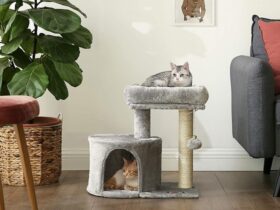


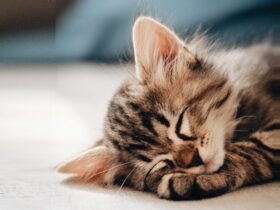












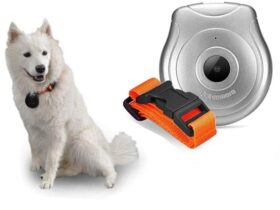




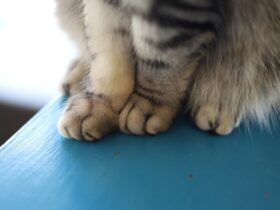

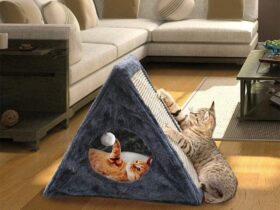

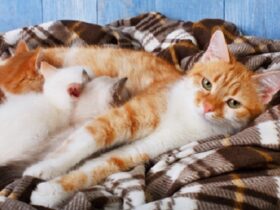
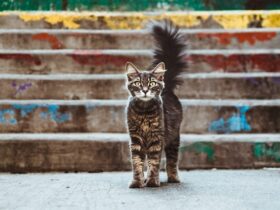
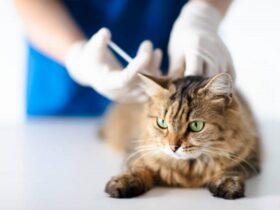




Leave a Reply